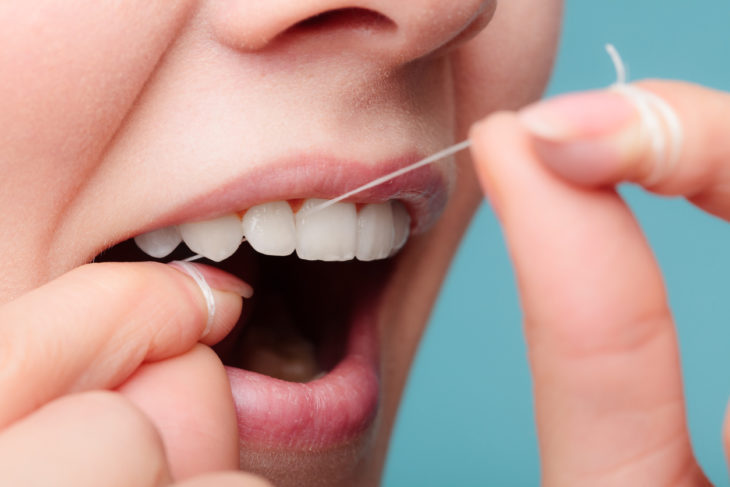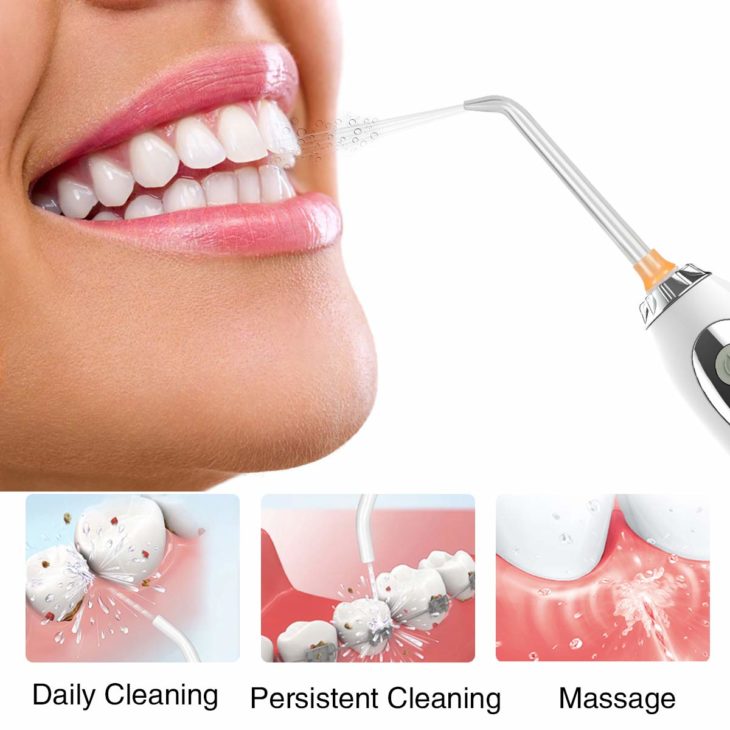Most people appreciate the importance of brushing their teeth regularly, and of using antimicrobial mouth rinse as well, but flossing is something that often gets overlooked. It isn’t given as much emphasis when kids are taught how to take care of their teeth, and it often falls by the wayside as a part of day-to-day dental hygiene, especially for people who find traditional string flossing awkward or painful.
Flossing is a vital part of your daily dental hygiene, though, and it is something that people should learn to do properly. If you struggle with traditional string flossing then you should talk to your dentist, and consider some of the alternative options.
String Flossing – The Traditional Method

Source: Hagerman Dental Care
String flossing involves using a fine piece of string, often coated with a minty scent/flavoring, to remove debris and plaque from between the teeth and around the gum line. String flossing remains popular even now because it is convenient and simple and because the floss is both readily available and quite inexpensive.
String flossing offers a huge improvement over brushing alone for dental hygiene, but it is not perfect, and it does not work for everyone. Some people, especially older people or those with arthritis, find that grasping the floss is difficult and that they cannot reach to properly clean between their teeth. Some people also find that string flossing irritates their gums, making it a less than ideal option.
Water Flossing and Air Flossing as Alternatives

Source: toyuugo
Water flossing and air flossing are two alternative methods to using string to floss, which still offer good cleaning of the space between the teeth and of the gum line. Water flossing uses a fine jet of water to blast debris away from the teeth, while air flossing uses air (and also a small amount of water) to achieve the same job.
According to Dental Dorks, a study published in the journal of dentistry found that water flossing produces better results than flossing with string, in terms of reducing plaque build-up. Both types of flossing are effective, but where string flossing produced only a 57% reduction, water flossing produced a 74% reduction in plaque.
That’s quite a significant difference. Air flossing alone appears to be less effective than water flossing, but still has a lot of potential benefits for people who struggle with traditional flossing.
Perhaps the best benefit of these options, however, is that they are easier to do. Waterpiks and air flossing devices are simpler to hold in your hands and require less manual dexterity to operate. This means that people who have difficulty moving their fingers are able to operate them and will achieve better results.
Water flossing and air flossing are gentler on the gums too, so they are things that people can do even if they have sensitive gums which are prone to bleeding.
Some people dislike water flossing because water devices take up more space compared to air flossers, and they are more expensive. Remember, though, that you are investing in your oral health so it is worth paying a little extra for better cleaning if you can afford it.
Best Practices for Cleaning Your Teeth

Source: Review Geek
Most hygienists and dentists would recommend that people brush their teeth twice a day, and floss daily, using the string and also either an air flossing device or a water flossing device if they are able to string floss properly and without pain.
The reason behind this is that modern flossing options are good, but they do not quite reach all areas of the mouth. String is able to penetrate all the way through from the front to the back and to reach the whole of the gumline. The waxy substance on the string is better for picking up debris, too.
None of the flossing techniques are effective for removing already existing hard plaque. If you have built up plaque on the back of your teeth then you should visit your dentist or a hygienist because they will be able to do a much better job than you can at home of getting rid of it. Once you have had your teeth thoroughly cleaned, then you can start thinking about keeping them that way.
Brush your teeth every morning and night, and floss daily too. If you are able to brush your teeth after meals, then do so. If not, then at the very least try to chew some sugar-free gum to neutralize the acids that may build up in your mouth after eating. This will help to stop tooth decay.
If you experience any pain, see your dentist immediately. Be proactive about checkups even when you are pain-free, to avoid needing fillings or painful and expensive dental work in the long term. It will be worth the investment in time to take care of your teeth and gums.
